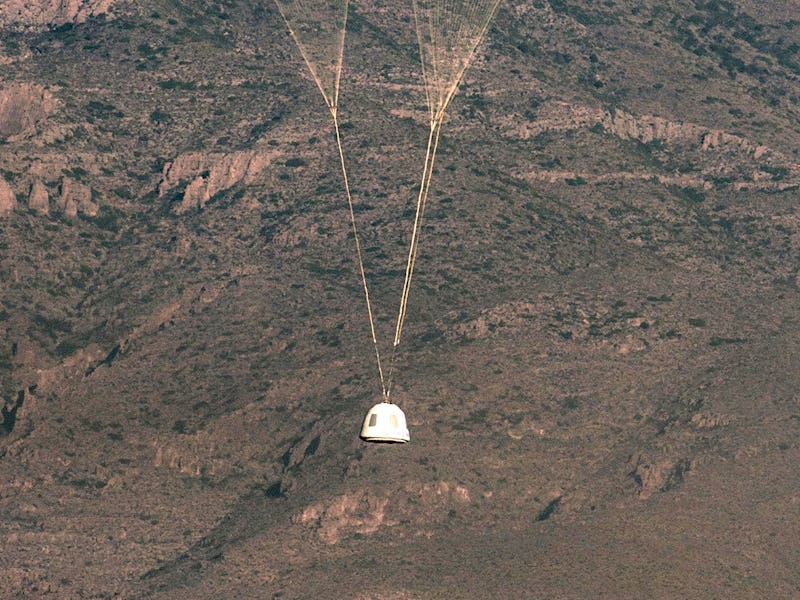Jeff Bezos: Blue Origin Will Drop Crew Capsule Without a Parachute in a Few Weeks
"A parachute failure is a credible scenario," Bezos wrote today.

Now, both Blue Origin and SpaceX have launched rockets and returned them to Earth for reuse. Blue Origin has even relaunched the same rocket (three times), a feat SpaceX has yet to achieve. But simply landing a rocket is only half the battle. Blue Origin, started by Amazon-founder Jeff Bezos, hopes to one day offer passenger flights, which would require landings that don’t crush the skulls of the people on board.
“A parachute failure is a credible scenario in even the most carefully designed recovery system, so a robust vehicle needs to accommodate that possibility,” Bezos wrote in the Blue Origin email newsletter sent out today. “We’re about to do that test.”
He adds: “We’ll provide a heads up when we know the flight date, but it will likely be before the end of the month.”
After a joyride to suborbital space — and perhaps further, once Blue Origin fully develops its BE-4 rocket booster — landings for space tourists and explorers should be safe, even if the parachute doesn’t open.
Blue Origin workers gather up a parachute after a recent test landing. The next test landing won't offer any parachutes.
Bezos is confident that the six-passenger crew capsule is ready for the same kind of trouble that once struck Apollo 15 when it experienced the trauma of landing in the ocean after one of its three parachutes didn’t catch, prompting the controllers on a nearby U.S. warship to radio the returning astronauts, “You have a streamed chute. Stand by for a hard impact.”
The Apollo 15 capsule that lost one of its parachutes on the descent inspired Bezos to perform a test of the New Shepard crew capsule.
Apparently, it’s all a part of his plan to ensure the New Shepard rocket is able to withstand just about anything.
In addition to redundant parachutes, the crew capsule is equipped with a two-stage crushable structure that absorbs landing loads, along with seats that use a passive energy-absorbing mechanism to reduce peak loads to the occupant. As an added measure of redundancy, the crew capsule is equipped with a “retro rocket” propulsive system that activates just a few feet above the ground to lower the velocity to approximately 3 ft/sec at touchdown. This final maneuver causes the dust cloud you can see when the crew capsule lands.
It is somewhat encouraging that the first Blue Origin rocket successfully touched down less than a year ago in November 2015, and SpaceX achieved the milestone the next month. Now, these same companies are actually making landings harder on themselves.
The crew capsule has successfully detached from the New Shepard rocket and landed without trouble.